Diffuse optical imaging using spatially and temporally modulated light
- PMID: 22894472
- PMCID: PMC3607494
- DOI: 10.1117/1.JBO.17.7.071311
Diffuse optical imaging using spatially and temporally modulated light
Abstract
The authors describe the development of diffuse optical imaging (DOI) technologies, specifically the use of spatial and temporal modulation to control near infrared light propagation in thick tissues. We present theory and methods of DOI focusing on model-based techniques for quantitative, in vivo measurements of endogenous tissue absorption and scattering properties. We specifically emphasize the common conceptual framework of the scalar photon density wave for both temporal and spatial frequency-domain approaches. After presenting the history, theoretical foundation, and instrumentation related to these methods, we provide a brief review of clinical and preclinical applications from our research as well as our outlook on the future of DOI technology.
Figures
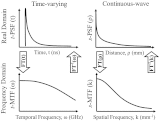



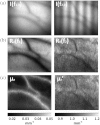
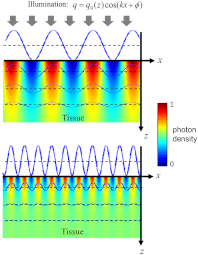

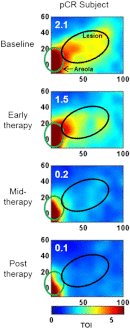
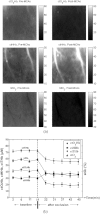


References
-
- Arridge S. R., “Optical tomography in medical imaging,” Inverse Probl. 15(2), R41–R93 (1999).INPEEY10.1088/0266-5611/15/2/022 - DOI
Publication types
MeSH terms
Grants and funding
- T32 CA009054/CA/NCI NIH HHS/United States
- U54-CA105480/CA/NCI NIH HHS/United States
- U54 CA105480/CA/NCI NIH HHS/United States
- R01-CA142989/CA/NCI NIH HHS/United States
- U54 CA136400/CA/NCI NIH HHS/United States
- R01 HD034091/HD/NICHD NIH HHS/United States
- NCI-2P30CA62203/CA/NCI NIH HHS/United States
- NCI-T32CA009054/CA/NCI NIH HHS/United States
- U54-CA136400/CA/NCI NIH HHS/United States
- R01 CA142989/CA/NCI NIH HHS/United States
- P41RR01192/RR/NCRR NIH HHS/United States
- P41 EB015890/EB/NIBIB NIH HHS/United States
- P41EB015890/EB/NIBIB NIH HHS/United States
- P41 RR001192/RR/NCRR NIH HHS/United States
- P30 CA062203/CA/NCI NIH HHS/United States
LinkOut - more resources
Full Text Sources
Other Literature Sources

